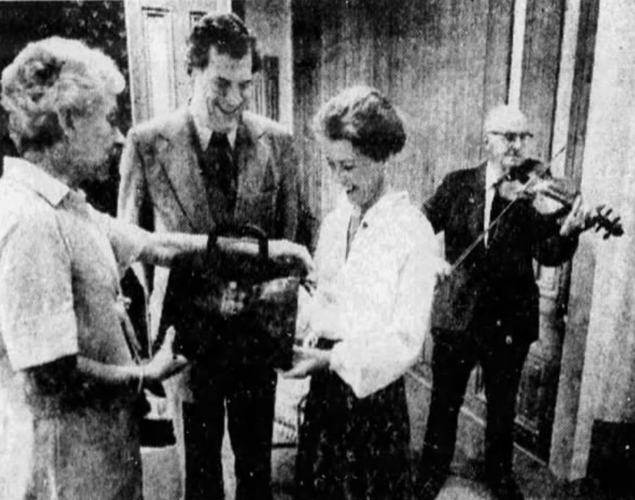Place Marie - a small shopping center that tucked away between Queen, Orange and Market streets in downtown Lancaster - has been in the news recently.
A new owner, Jared Mizrahi, plans to renovate the property's upper floors into apartments and offices. He also hopes to soon fill a vacant ground-floor restaurant spot.
But what did the early days of Place Marie look like? Here are five facts - courtesy of the LNP | LancasterOnline digital archive - that you may or may not recall.
1. Place Marie was named for the owner's wife
Developer Fred Bohrman conceived Place Marie Mall after being inspired by the small, eclectic shops in Montreal - and then named the project after his wife and business parter, Marie.
When Place Marie opened in 1978, Lancaster's downtown shopping district was suffering. Park City Center had opened in 1971, and many retailers were leaving the downtown area for the new mall, as well as other recently built suburban shopping centers.
The new downtown mini-mall - along with the nearby Central market Mall, which opened just a few months later - was seen as something of a bulwark against that retail flight. Thus, its construction and early days of business were covered heavily in Lancaster's newspapers.
2. A cork tree was planted in the courtyard

Seen under construction in August 1978, the Place Marie courtyard was paved with Belgian stones and featured a cork tree, planted in honor of the former Armstrong Cork Co. of Lancaster.
One of the most unique features of Place Marie is its open-air central courtyard, which was created by demolishing the center of the structure.
Paved with Belgian stone, the courtyard was highlighted by a cork tree, which was planted in honor of the former Armstrong Cork Co., a mainstay of Lancaster industry.
The shopping center, which occupied the former Hertzler and Zook buildings, cost between $750,000 and $1 million to construct.
3. The first shop was Pappagallo
On Sept. 5, 1978, the first shop in Place Marie opened.
The Pappagallo shop sold women's footwear, handbags and accessories - and the first customer was Flora Scott, wife of Lancaster Mayor Richard Scott.
The store's opening day featured a ribbon-cutting ceremony with the mayor, as well as a strolling violinist to add an extra touch of elegance.
4. Place Marie was a haven for women business owners

From left, business partners Gloria Purdy, Joan Samitt and Sue Keweshan pose together at the opening of their Place Marie shop, The Merchant of Tennis, in this photo from September 1978.
By the end of 1978, about a half-dozen shops had opened in Place Marie - and all of them featured women as owners or co-owners.
This fact was unusual enough at the time that an article in the Dec. 1 Intelligencer Journal referred to it as a "curious" phenomenon.
Early Place Marie stores with women at the helm included Pappagallo, Merchant of Tennis (racquet sport supplies), Theodore Bear (stuffed animals), The Plum (women's clothing) and The Bed and Bath Affair (home goods).

Lancaster Mayor Richard Scott cuts a ceremonial ribbon at the opening of The Plum, a women's clothing store in Place Marie, in this photo from November 1978. Scott is flanked by Plum manager Diane Daryman, left, and owner Jan Mishkin.
5. Outdoor dining made its Lancaster debut at Place Marie
Place Marie wasn't just about shopping. Soon after opening day, upscale bar and restaurant P.J. Matthews began welcoming customers.
In the summer of 1980, the restaurant expanded, adding more indoor space, a small take-out shop and an outdoor seating area in the courtyard. It was the first outdoor dining venue in Lancaster city - decades before the current boom in eating and drinking al fresco.
By the end of that summer - less than two years after Place Marie opened - all 13 of its retail spaces were occupied, and Fred Bohrman reported that "all the shops are doing well."
The last two tenants to fill out the initial slate were hair salon Headlines III and the Heritage Shop, a gift shop.





 JED REINERT | Digital Staff
JED REINERT | Digital Staff


